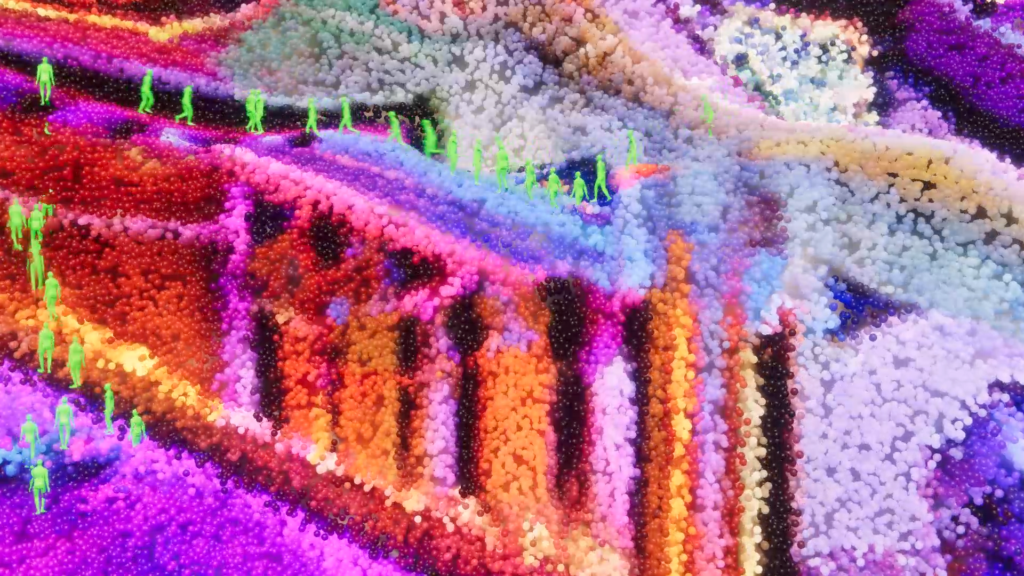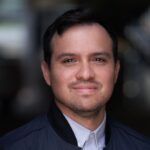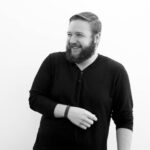
Description:
Required Skills: Basic modeling skills and understanding of texture and displacement shaders. Basic notion of the use of AI models with Google Colab. Basic experience in Unity game development and/or work with agents. Experience in procedural design and visualization is advisable.
Required Software: Blender, Houdini, Google Colab, Unity.
Required Hardware: PC with Windows 10 (preferred) or Mac. A good, dedicated graphics card is advisable but not required.
Maximum number of participating students: 100
The workshop grounds itself on current widespread research on neural network-based image generation models and explores their potential agency for 3D reconstruction of performative environments for machine learning agents. A range of AI models is to be studied in the hope of superseding manual 3D modeling of the architectural form-finding process. Leveraging the power of text-guided models such as Dall-E, Disco Diffusion, and CLIP, as well as image synthesis models such as StyleGAN and SinGAN, unreal variations of architectural images will be produced based on personalized conceptual prompts. Consecutively, further explorations on topology reconstruction of unreal images and their animated latent space will be carried out making use of machine vision models such as MIDAS and SDF-based models capable of recovering 3D depth data from 2D domain observation, with the aim of constructing fine surface detail utilizing procedural modeling tools in Blender and Houdini. The computational power and VFX tools of the Unity game engine will be leveraged to deploy expressive 3D learning representations such as voxels, point clouds, and meshes, to not only technically 3D-reconstruct 2D inputs, but to construct newly envisioned architectural forms aided by the dynamic materiality of their animated latent space. A performative agency of the latent space will also be studied in the search for morphing topologies that ML agents can learn from to optimize mass-navigation performance and program-use simulation. Being the workshop’s goal to generate an autonomous architectural form-finding entity with controlled levels of supervision within a collaborative environment that lies within AI indeterminacy and human control while challenging and augmenting the designer’s role.
Schedule:
timezone: (GMT -7:00) Mountain Time (US & Canada)| Start time | End time | Description |
|---|---|---|
| 2022-06-27 - 06:00 | 2022-06-27 - 08:00 | Introductory Lecture: State-of-the-art AI models (2D & 3D). WS 1: Diffusion models text prompts and GANs models datasets. |
| 2022-06-28 - 06:00 | 2022-06-28 - 08:00 | WS 2: 3D geometry and animation workflows using Google Colab and Blender/Houdini. |
| 2022-06-29 - 06:00 | 2022-06-29 - 08:00 | WS 3: Unity introduction and ML agents workflows. |
| 2022-06-30 - 06:00 | 2022-06-30 - 08:00 | WS 4: Unity VFX workflows for latent space animation and augmentation. |
| 2022-07-01 - 06:00 | 2022-07-01 - 23:59 | Final presentation and submission of deliverables. |
Instructors:
 |
Carlos Navarro | Carlos Navarro holds a Master of Design Research from the Southern California Institute of Architecture, and a Diploma of Architecture from the Pontifical Catholic University of Peru. He is an architectural designer with a work background from firms in Los Angeles and Lima, including OFFICEUNTITLED, Steinberg Hart, P-A-T-T-E-R-N-S, and MASUNOSTUDIO. His work has been published on digital platforms such as ArchDaily, Frame, Architect Magazine, The Architect’s Newspaper, SuckerPUNCH, etc. He has participated in jury panels at OTIS College of Art and Design in LA and has taught computational design courses at Universidad de Los Andes, Bogota. His research on AI and ML has been divulged through workshops at CAADRIA 2022 Post-Carbon Conference, and Digital Futures Talks and Tutorials. |
 |
Harry Moller | Allow me to introduce myself, my name is Harry Moller founder of plugin arquitectura, an architecture and computational design office based in Mexico. I'm a person who in his early days in architecture has been trying to cement the foundation for an architectural thought process where the key is to find balance between space, nature, and building conception. Design and the technology that surrounds it are the bolt and knot in which I believe I can complement into the creative process. Nowadays I have a strong belief about the importance between development and the tools for its expression. Whether it is through digital tools or fabrication of pieces, the approach of a position like this is the one that helps develop the language of the concept in process. |
Disclaimer:
All workshops will accept 100 applications MAX.



